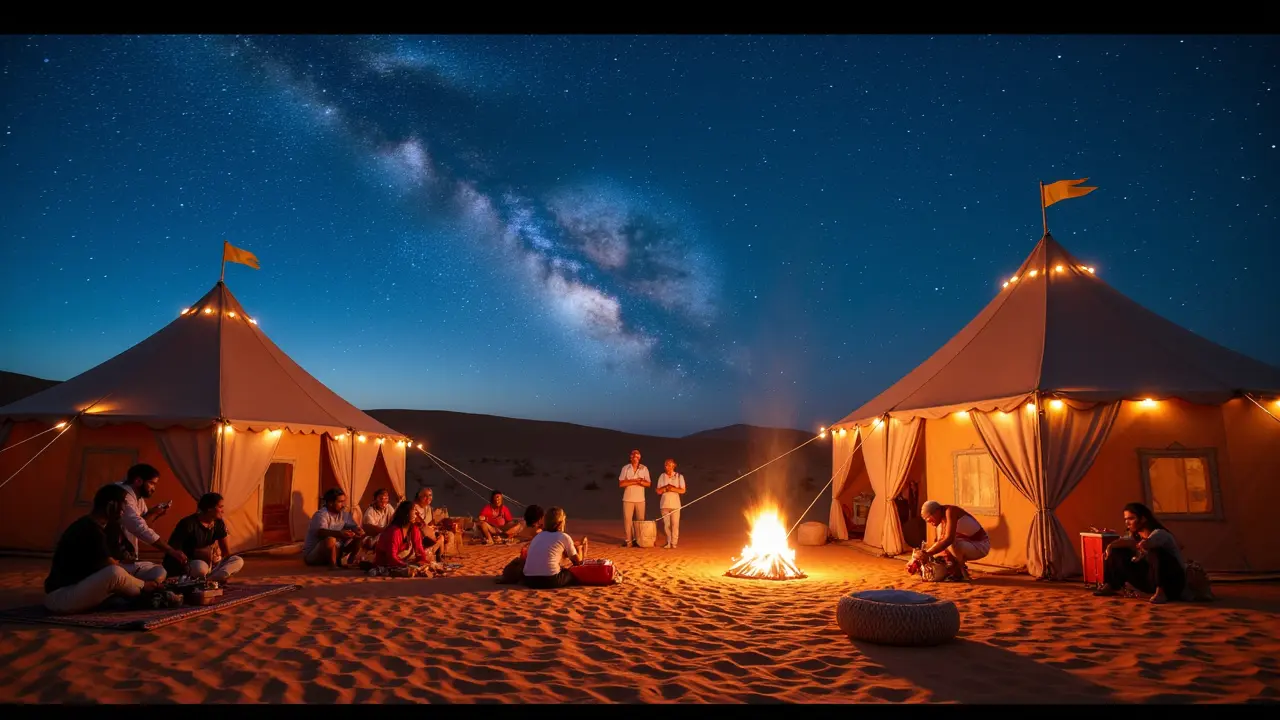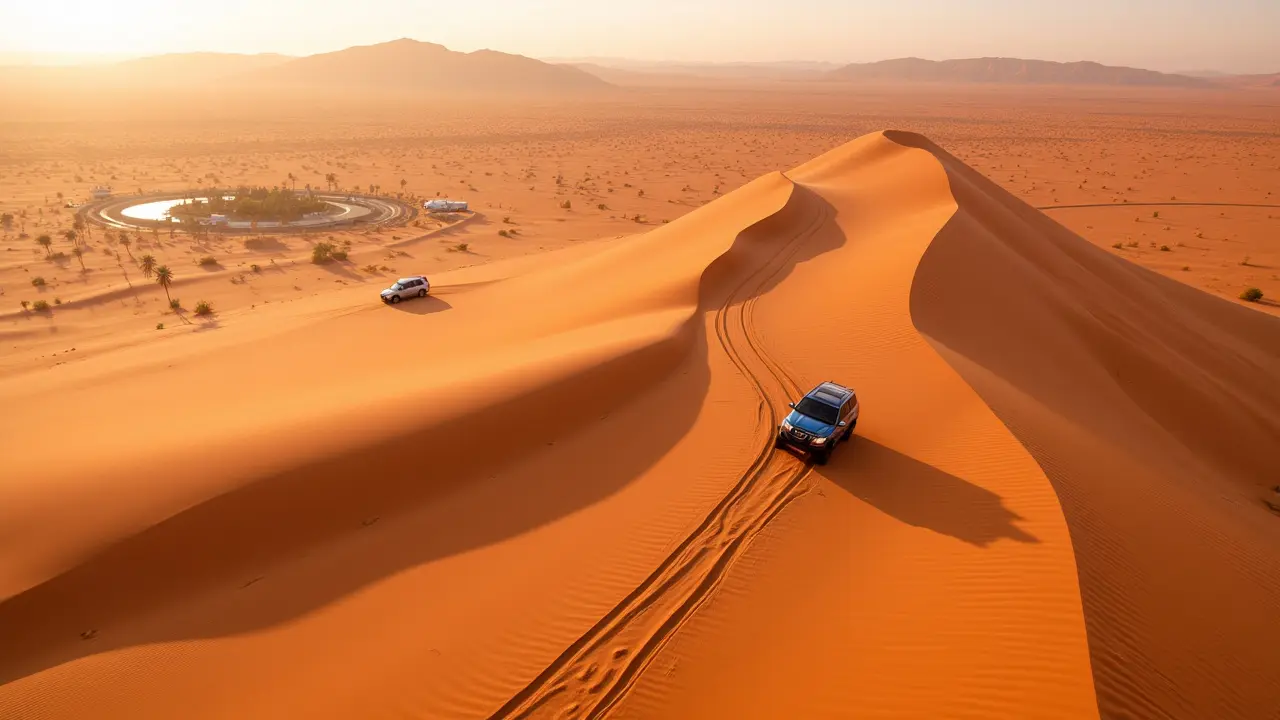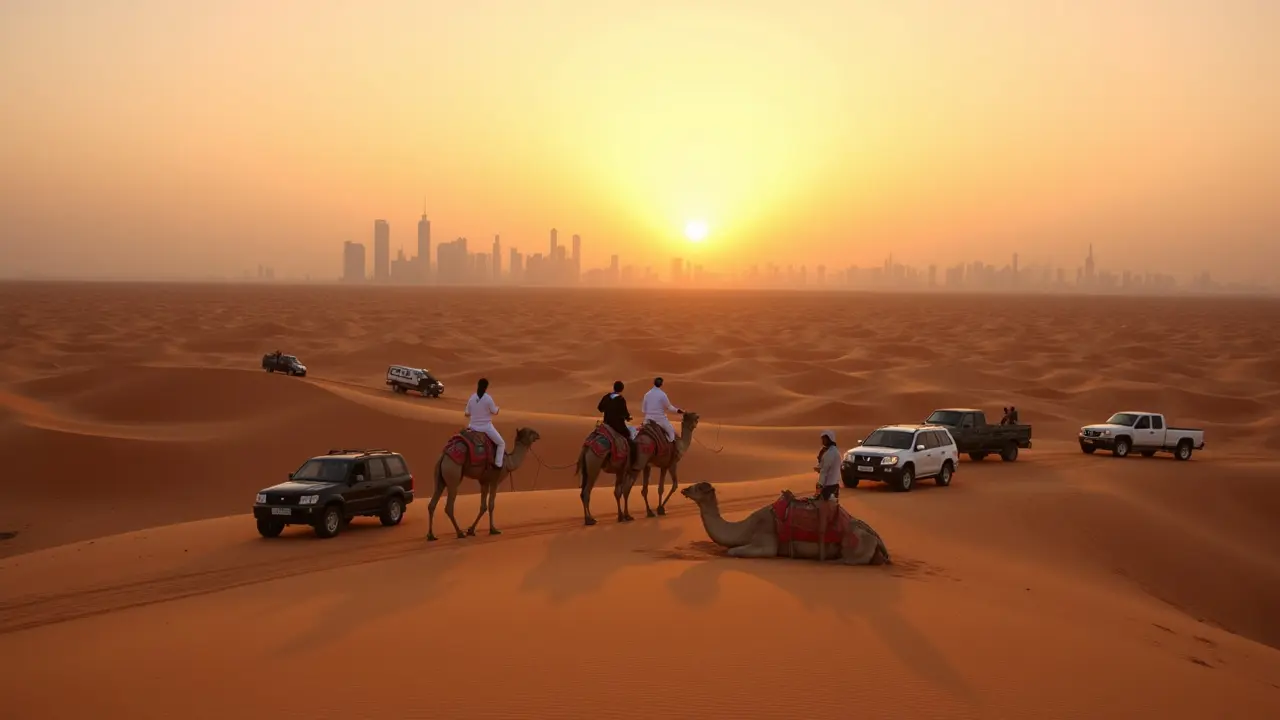The desert just outside Dubai isn’t just emptiness—it’s a wild labyrinth of golden dunes, ancient Bedouin traditions, and little moments that make your heart race. Sure, you can spot the city’s skyline from patches of sand, but step even ten minutes beyond, and it feels like you’ve landed on another planet. Desert safari in Dubai isn’t some cliché tourist trap; it’s a place where people unlock the raw energy of the Arabian Peninsula and encounter customs that still shape local life. Locals recommend going late in the afternoon, when the sun casts endless shadows and turns the sand from gold to red. Sand in your shoes is the norm out here, and, honestly, part of the fun. If you’ve wondered why the desert pulls people back again and again, just wait until a breeze hits your face as your 4x4 crests another monstrous dune, or you sip cardamom-dusted gahwa under a sky full of stars. Dubai’s desert is closer than you think, but once you’re in it, nothing feels familiar or routine.
Stepping Into the Dunes: How Dubai Does Desert Safari
Forget what you think you know about desert safaris from travel posters—as soon as you hit the Al Marmoom Conservation Reserve or set foot on the soft sands at Lahbab or Al Awir, you realize Dubai’s version is pure adrenaline paired with local charm. It’s not unusual to bump into residents who treat the weekend dune-bashing as their version of a fitness class, or families picnicking among the ghaf trees, sharing fragrant chicken machboos and minted lemonade. The most reputable safari operators pick guests up in spotless Toyota Land Cruisers or Nissan Patrols, guided by drivers who grew up riding these dunes and can read the sand like a book. If you opt for Platinum Heritage, the luxury eco-safaris use vintage Land Rovers for a cooler retro vibe and are known for telling real Emirati stories.
Dune-bashing isn’t a gentle ride—it’s all shrieks, sudden drops, and that split second where you’re weightless before the tires bite back into the sand. The more daring drivers love to hit 30-40 degree inclines, zigzagging up the Lehbab dunes where drifts can reach ten meters high. Sunset brings a hush; golden hour is prime for photos and that feeling of being impossibly small. Take a moment out from selfies and just look. On busy days, you see convoys winding toward massive ridges, headlights piercing the haze, everyone chasing their little thrill.
Here’s a pro tip: skip flip-flops. Sand gets everywhere, sure, but sneakers keep the burn at bay. Don’t forget sunglasses—not just for style, but to keep the glare and the wind-whipped sand away. Try booking with an operator tied to the Dubai Destinations initiative or the UAE Ecotourism Project; they often add animal tracking, astronomy sessions, or abaya-try-on for deeper connection.
For families, some tours avoid the wildest rides and focus on wildlife drives. Gazelles darting between bushes and the chance to spot Arabian oryx make the conservation reserves a must for animal lovers. Little ones often get their first try at sandboarding, surfing down powdery slopes on well-worn boards while parents snap boomerang videos. Come Ramadan, some safari operators pivot the whole experience toward nighttime, with a more serene pace after the maghrib prayer, henna painting, and dates served in traditional majlis tents.
Bedouin Traditions: Old Tales in Modern Sands
What makes a desert safari in Dubai different from Morocco, Nevada, or Jordan? It’s the Bedouin roots—the way Emirati hosts remind you this land isn’t empty, it’s alive with memory and meaning. Most safari camps go the extra mile to welcome you like an honored guest, pouring Arabic coffee (gahwa) into tiny cups and serving sticky-sweet lugaimat or flaky baklava before dinner. Listen for the call of a falconer. Falconry is more than a show; it’s a status symbol among Emirati families, and seeing the birds up close is unforgettable. Some places, like Al Maha Desert Resort, offer exclusive falconry sessions, while Arabian Adventures even lets you hold trained owls or falcons on your arm under supervision.
Food here isn’t tourist fluff. Traditional spreads might include slow-cooked ouzi (lamb under rice and spiced nuts), smoky eggplant dips, or regag bread fresh from the griddle. Sharing a meal—especially on thick woven carpets—is at the heart of Emirati hospitality. And dancers? Yes. The ever-popular tanoura spinning dancers and fiery belly dancers round out the night at most safari camps, but ask around, and you’ll find folk singers performing traditional ayala or yola dances that local families know by heart.
One detail people miss: shisha lounges at some desert camps offer huge menus, from classic double apple to experimental flavors you probably won’t find downtown. If you’re not sure where to start, ask an Emirati host what they smoke; recommendations usually turn into fun conversations about hometowns and local hangouts.
Stargazing comes standard out here. Away from city lights, you can spot familiar constellations, but the highlight is often the planets—Venus and Jupiter standing bright, just above the silhouette of the dunes. In recent years, some companies, like Explorer Tours, brought in local astronomers for guided night sky sessions with telescopes, and these moments stick with you long after the lanterns go out. The silence? It’s its own kind of music.

The Adventure Seeker’s Checklist: Dune Buggies, Sandboards, and More
There’s no one way to tackle the desert in Dubai—think of it as a choose-your-own adrenaline adventure. Want to go all out? Hop on a quad bike or dune buggy for a rumble across low ridges and steep bowls (most operators require a driver’s license for the more powerful vehicles). Bab Al Shams and Big Red Adventure Tours offer everything from single-seaters to 800cc monster machines that tear across the sand at shocking speeds. If you’re riding after rain (rare, but magical), the sand packs tighter and you’ll get a smoother, faster ride.
Sandboarding is a must. The boards look like snowboards, but the ride feels floatier, like skimming powdered sugar. Most guides know where the biggest natural “slides” are, so you’ll get real bragging rights if you conquer a ride from the top. For a slower pace, a hot air balloon flight is as close to flying as you’ll get—imagine sunrise over endless dunes, with falcons swooping alongside the basket. Balloon Adventures Dubai is a go-to for these trips, and they fill up weeks in advance in the cooler months (November to March). Don’t forget your camera—best practice is to keep it in a ziplock to keep out the sand. More than a few tourists have learned that lesson the hard way.
If you prefer to soak up the desert’s peaceful side, try a camel ride. Yes, it’s a bit bumpy and the animals grunt, but riding a camel under the blanket of dusk is unlike anything else. In Dubai, most camel handlers are expert storytellers, sharing legends from their tribes as you trek toward the next camp. During December’s Al Marmoom Camel Race, expats and locals fill the grandstands, but on normal safari nights you get a private snapshot of this quirky, high-stakes world.
Adventure lovers also make use of the clear air and cold mornings for yoga and meditation sessions on private dunes. Desert Yoga’s pop-up classes (check their Instagram for current spots) have become a hit, with mats laid out at sunrise and instructors guiding deep stretches while the only background noise is a distant bird call or the shifting sand. This blend of movement and stillness gets rave reviews from residents seeking real mental clarity outside the buzz of the city.
Planning Your Desert Escape: When, Where, and What to Pack
The desert near Dubai is open year-round, but timing is everything. Locals swear by November through March: nights are cool, afternoons warm but not scorching, and the breeze keeps everything feeling fresh. In July and August, it’s a different story—evening safaris only, with sunscreen and water at the top of the packing list. Ramadan brings a quieter, more spiritual energy, with camps focusing on traditional Iftar spreads and reducing music and dance. Outfit-wise, breathable clothing is a must. Linen or loose cotton, a scarf for dust, and a hat go a long way—but remember, modest dressing isn’t just for show. It’s a mark of respect for culture and comfort.
Book in advance if you want a specific operator, and don’t be afraid to check comparison sites. Prices spike during Christmas, New Year’s, and school breaks. Opt for smaller group tours for a more personal touch—large convoys can turn the dunes into noisy parking lots (not fun for anyone). Check for sustainability efforts before booking: does your operator minimize plastic waste? Do they involve local guides?
Cash isn’t needed much, but bring a few small bills for tips. Most operators include unlimited drinks (water, tea, coffee), but anything extra—souvenir sand art, special photos—costs more. If you’re planning to fly a drone, check with the operator first; some areas ban drones, especially near conservation cracks or local wildlife spots.
Cell service can be spotty, so set your group meeting points. And if you wear contacts, bring spare saline. Sandstorms are rare, but they do happen—wrap your phone in an extra ziplock and keep electronics in your bag when not in use.
Here’s a quick look at what visitors most often pack and why, based on real Dubai safari reviews:
| Item | Why Bring It |
|---|---|
| Sneakers or trainers | Protect feet from hot sand/give grip while climbing dunes |
| Scarf/shemagh | Shields mouth and neck from sand, sun, and chill at night |
| Sunscreen & sunglasses | Serious sun–burn comes quick in the open desert |
| Camera/ziplock bag | For stunning photos, and to keep sand out |
| Refillable water bottle | Stay hydrated, especially with all that walking/riding |
| Light jacket | Desert gets genuinely chilly after sunset |

Beyond the Sands: Why Dubai’s Desert Safaris Matter
It’s easy to lose track of time in Dubai. But a night under the open sky, in the company of shifting dunes and ancient legends, resets something in you. Desert safaris aren’t just about Instagram photos or riding camels; they’re a living part of Dubai’s story, tying together centuries of Bedouin perseverance, the quiet of wild nature, and a city that never stops reinventing itself. Every safari leaves its mark—sometimes it’s the rush of a 4x4 ride, other times it’s tasting gahwa brewed on coals or listening to an Emirati elder tell a camel-racing tale. If you’re new in town, a desert trip is a shortcut to understanding what makes Dubai tick—a strange mix of speed, grace, openness, and tradition all rolled into one short drive from the city lights.
People often return for the sense of space—the kind you don’t get in a shiny shopping mall or glitzy rooftop bar. They come back for breakfast at sunrise camps, lantern-lit dinners in secret oases, or the way music sounds on a silent night when wind whistles through red sand. It’s not just tourists, either. Old-timer expats and young Emiratis go back for the stories, the laughter, and the age-old traditions that, out here, still matter. For the next trip, try tracking wildlife on foot with a local guide, star-spotting with a makeshift astronomy group, or joining a conservation clean-up. Dubai’s desert isn’t just a backdrop for city selfies—it’s a living, breathing symphony of sand and sky, played out every single dusk for those willing to listen.






